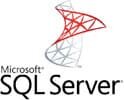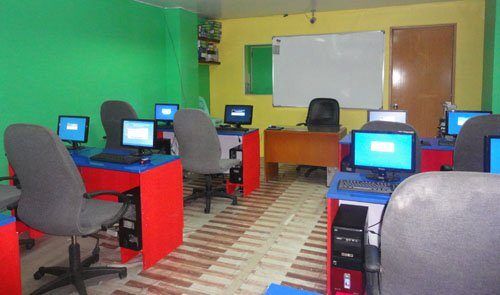Administering a SQL Database Infrastructure


Key Features
- 5 days Instructor-Led Live Online Classroom
- Webex Virtual Class for interactive near classroom experience
- Access to Remote Lab PC for Hands-On activities
- Unlimited Practice exams
- Integrated Courseware in the Learning Management System
- Step by Step guide for challenging hands-on lab activities
- Flexible Schedules – Both Weekdays and Weekends Classes
- Get Trained by SQL 2016 Database Expert Trainer with Over 15 Years of Industry Experience
- No. 1 Training Center for SQL 2016 Database Courses
- E-learning Access for Pre-course and Post Training Support
- Best Price Guaranteed for SQL 2016 Database Courses
Key Features
- 5 days Instructor-Led Face to Face Classroom training
- We are a TESDA Registered Training Center
- Offering Flexible Schedules – Both Weekdays and Weekends Classes
- Get Trained by SQL 2016 Database Expert Instructor with Over 15 Years of Industry Experience
- No. 1 Training Center for SQL 2016 Database Courses
- We Guarantee Best Price for SQL 2016 Database Courses
Key Features
- Gain the technical skills needed in the workplace. 1 on 1 training is the best way to learn
- Quickest way to master any of our course offerings.
- Experience superb hands-on laboratory activities and unobstructed attention from your trainer.
- Guaranteed to start the Training
TRAINEE FEEDBACKS
ABOUT THE COURSE:
SQL VERSION: MS SQL 2016
This Instructor-led course provides students who administer and maintain SQL Server databases with the knowledge and skills to administer an SQL server database infrastructure. It will be of use to individuals who develop applications that deliver content from SQL Server databases.
TARGET AUDIENCE
The primary audience for this course is individuals who administer and maintain SQL Server databases. These individuals perform database administration and maintenance as their primary area of responsibility or work in environments where databases play a key role in their primary job. The secondary audiences for this course are individuals who develop applications that deliver content from SQL Server databases.
OBJECTIVE:
After completing this course, students will be able to:
- Authenticate and authorize users
- Assign server and database roles
- Authorize users to access resources
- Protect data with encryption and auditing
- Describe recovery models and backup strategies
- Backup SQL Server databases
- Restore SQL Server databases
- Automate database management
- Configure security for the SQL Server agent
- Manage alerts and notifications
- Managing SQL Server using PowerShell
- Trace access to SQL Server
- Monitor a SQL Server infrastructure
- Troubleshoot a SQL Server infrastructure
- Import and export data
PREREQUISITE:
In addition to their professional experience, students who attend this training should already have the following technical knowledge:
- Basic knowledge of the Microsoft Windows operating system and its core functionality.
- Working knowledge of Transact-SQL.
- Working knowledge of relational databases.
- Some experience with database design.
RECOMMENDED PREREQUISITE:
QUERYING DATA WITH TRANSACT SQL
EMPLOYMENT OBJECTIVES
Upon completion of the course, trainees will be qualified to be a database administrator, database developer or database architect
COURSE CURRICULUM
SQL 2016 Database Infrastructure Syllabus
Module 1: Authenticating and Authorizing Users.
- Authenticating connections to SQL Server
- Authorizing logins to access databases
- Authorization across servers
- Partially contained databases
Module 2: Assigning Server and Database Roles.
- Working with server roles
- Working with Fixed database roles
- Creating user-defined database roles
Module 3: Authorizing Users to Access Resources.
- Authorizing user access to objects
- Authorizing users to execute code
- Configuring permissions at the schema level
Module 4: Protecting Data with Encryption and Auditing.
- Options for auditing data access in SQL Server
- Implementing SQL Server audit
- Managing SQL Server audit
- Protecting data with encryption
Module 5: SQL Server Recovery Models.
- Backup strategies
- Understanding SQL Server transaction login
- Planning a SQL Server backup strategy
Module 6: Backup of SQL Server Databases.
- Backing up databases and transaction logs
- Managing database backups
- Working with backup options
Module 7: Restoring SQL Server Databases.
- Understanding the restore process
- Restoring databases
- Working with point-in-time recovery
- Restoring system databases and individual files
Module 8: Automating SQL Server Management.
- Automating SQL Server management
- Working with SQL Server agent
- Managing SQL Server agent jobs
- Multi-server management
Module 9: Configuring Security for SQL Server Agent.
- Understanding SQL Server Agent Security
- Configuring credentials
- Configuring proxy accounts
Module 10: Monitoring SQL Server with Alerts and Notifications.
- Configuration of database mail
- Monitoring SQL Server errors
- Configuring operators, alerts, and notifications
- Alerts in Azure SQL database
Module 11: Introduction to Managing SQL Server by using PowerShell.
- Configure SQL Server using PowerShell
- Administer SQL Server using PowerShell
- Maintain the SQL Server environment using PowerShell
- Managing Azure SQL Server databases using PowerShell
Module 12: Tracing Access to SQL Server.
- Capturing activity using SQL Server profiler
- Improving performance with the database engine tuning advisor
- Working with tracing options
- Distributed replay
- Monitoring locks
Module 13: Monitoring SQL Server.
- Monitoring activity
- Capturing and managing performance data
- Analyzing collected performance data
- SQL Server utility
Module 14: Troubleshooting SQL Server.
- SQL Server troubleshooting methodology
- Resolving service related issues
- Resolving login and connectivity issues
- Troubleshooting common issues
Module 15: Importing and Exporting Data.
- Transferring data to/from SQL Server
- Importing and exporting table data
- Using BCP and BULK INSERT to import data
- Deploying and upgrading data-tier applications
COURSE FEE
(₱18500) Now ₱ 14800(USD385])
COURSE SCHEDULES

Next Level Course
Call Us for more information
Tel: (+632) 8285-2936 / (+632) 8736-2032
SMART: 09204282022 / 09603525900
GLOBE: 09773282627 / 09563346864
Request Course Quotation
Virtual/Webex Learning
Take advantage of CNCTC 's latest interactive Instructor-Led Live Online Training. Online Courses are delivered using WebEx to bring the classroom to your home or at your workplace and can be accessed directly on your own computer with an internet connection. By using Cisco’s WebEx, and integrating our Computer lab facilities, we can provide a near-classroom experience remotely to your own location of choice. Register Now!


